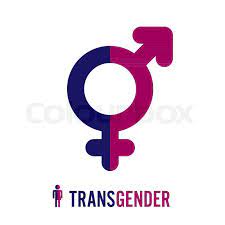Starting hormone replacement therapy (HRT) can be one of the most significant steps in a transgender person’s transition journey. It’s not just about the physical changes; it’s also about aligning your body with your gender identity, which can bring immense relief and joy. Whether you’re exploring HRT for the first time or looking for guidance on the next steps, this article provides essential information to help you navigate the process effectively.
The world of HRT can seem daunting, filled with medical jargon and numerous options. But fear not! With the right knowledge and support, you can make informed choices that lead to a happier, more authentic you. Let’s break down everything you need to know about starting HRT as a transgender individual.How To Get More EstrogenHow To Decrease Estrogen Levels In MenWhat Does A Transgender Penis Look Like
What Is HRT and Why It Matters for Trans Folks
Hormone Replacement Therapy (HRT) involves taking hormones to induce physical changes that align your body with your gender identity. For transgender individuals, this can mean taking estrogen and anti-androgens for those transitioning to female, or testosterone for those transitioning to male. The effects of HRT can be transformative, helping individuals feel more comfortable in their skin and improving psychological well-being.
HRT matters not only for physical changes but also for mental health. Many trans people report feeling a significant decrease in gender dysphoria, anxiety, and depression after starting HRT. This therapy can foster a sense of belonging and authenticity, making it a vital step in many people’s journeys.
Understanding the Different Types of HRT Available
There are several types of HRT, primarily categorized into two groups: estrogen-based therapies and testosterone therapies. Estrogen therapy is often supplemented with anti-androgens, which help reduce male secondary sexual characteristics. Common forms of estrogen include pills, patches, and injections. On the other hand, testosterone therapy is typically administered via injections or gels, promoting the development of male secondary sexual characteristics.
Each type of HRT has its own set of effects, timelines, and potential side effects. It’s essential to consult with a healthcare provider to determine the best regimen for you based on your health needs and desired outcomes. The right choice will help you achieve your goals while ensuring your safety and well-being.
First Steps: Finding the Right Healthcare Provider
Finding a supportive and knowledgeable healthcare provider is crucial when starting HRT. Look for professionals who specialize in transgender healthcare or have experience working with trans patients. A good provider will be sensitive to your needs, take the time to answer your questions, and help you navigate the medical aspects of transitioning.
To find the right provider, consider reaching out to local LGBTQ+ organizations or support groups for recommendations. Online forums can also be a great resource for finding healthcare professionals who come highly recommended by other transgender individuals. Remember, this journey is about you, so don’t hesitate to seek a provider who makes you feel comfortable and respected.
The Importance of Mental Health During Your HRT Journey
Mental health plays a fundamental role during your HRT journey. While HRT can alleviate feelings of gender dysphoria, it’s equally important to pay attention to your emotional well-being throughout the process. Many individuals find it helpful to engage with mental health professionals who understand transgender issues, whether through therapy or support groups.
Establishing a solid support network can make a significant difference. Surround yourself with friends, family, or community members who are affirming and supportive. They can provide encouragement as you navigate the emotional landscape of your transition, making the journey feel less isolating.
Preparing for Your Initial HRT Consultation: What to Expect
When you first meet with your healthcare provider, expect a comprehensive evaluation. This may include discussions about your medical history, mental health, and your motivations for starting HRT. Don’t be surprised if they ask about your gender identity and how you feel in your current body; it’s all part of understanding your needs better.
It’s essential to come prepared with questions and concerns you might have regarding the process. Consider writing down any specific goals you have for your transition, as well as any fears or anxieties you wish to address. This dialogue helps set the stage for a collaborative approach to your HRT journey.
Common Questions and Myths About Starting HRT
Many myths surround HRT, which can lead to confusion or misinformation. One common misconception is that HRT will result in immediate and dramatic changes. In reality, physical changes often take time, with some effects taking months or even years to fully manifest. It’s crucial to have realistic expectations and understand that everyone’s experience is unique.
Another myth suggests that starting HRT will completely erase one’s previous physical characteristics. While HRT can induce significant changes, it’s important to recognize that some traits may persist. Understanding these nuances can help manage your expectations and prepare you for the journey ahead.
HRT Dos and Don’ts: Tips for a Smooth Transition
When starting HRT, there are several dos that can help ensure a smoother experience. Do communicate openly with your healthcare provider about any side effects you may experience. This open dialogue will allow them to adjust your treatment if necessary. Also, do stay informed about what to expect during your transition; online resources and support groups can provide excellent insights.
Conversely, there are also important don’ts to keep in mind. Don’t rush the process; HRT is a marathon, not a sprint. Each person’s body responds differently, and it’s important to allow time for your body to adjust. Additionally, don’t hesitate to seek support from others who are on a similar journey—sharing experiences can be incredibly validating and educational.
Tracking Your Progress: What Changes to Look For
Tracking your progress during HRT can help you understand how your body is responding to treatment. For those taking estrogen, common changes may include breast development, fat redistribution, and softer skin. For those taking testosterone, you might notice increased body hair, a deeper voice, and changes in muscle mass. Keeping a journal of these changes can help you celebrate milestones and stay motivated.
It’s also useful to keep track of any emotional or psychological changes you experience. Many people report feeling more aligned with their gender identity and experiencing reduced anxiety and depression. Reflecting on both physical and emotional progress can be a powerful reminder of your journey and growth.
Starting HRT is an empowering step toward living authentically as your true self. It’s a journey full of anticipation, growth, and sometimes challenges, but with the right information and support, you can navigate it successfully. Keep in mind that everyone’s path is unique, and what works for one person may not work for another. The key is to remain informed, patient, and open to the beautiful changes ahead. Good luck on your journey!


